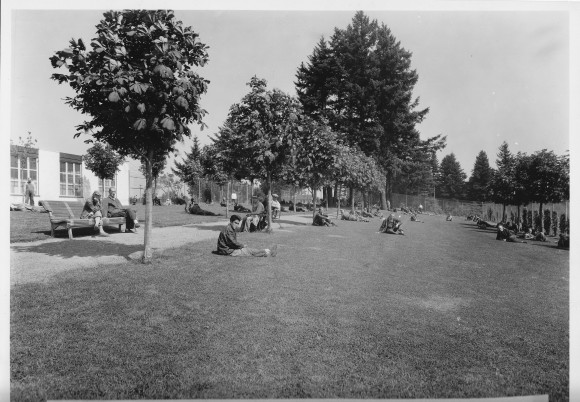Steve B. was a patient at Morningside Hospital in the mid-1960s. He is the first former patient to contact us and provides a look at life at Morningside from the patient’s perspective. If you have a question for Steve, please leave a comment and we’ll pass them along to him.
By Steve B.
During my stay, both drugs and EST were used. I was not treated with EST, only drugs, among which I am sure there were anti-depressants and tranquilizers. There were perhaps six or seven teens in my ward and one or two of them were administered EST. Memory tells me that most EST-treated patients were in the older population. On my ward, meds were kept in a locked chest located on the wall near the aides’ station. These were carefully measured and administered by the aides themselves. Mine were in powder format, mixed with orange juice for tolerable palatability.
Dr. Roy Moss, in “talk therapy” individual sessions, addressed my problems, but I was never given a diagnosis or nomenclature for those problems. Perhaps my parents were given a technical-medical name for what was ailing me, but they never mentioned it and I never inquired.
Hindsight tells me there were probably well over a hundred patients during the period of my stay, but these were scattered among different wards/dorms, and I never witnessed a mass-gathering of patients, so this is only my best guess.
There were many native Alaskans at Morningside during my stay. Again, since I have no real grasp on the total population, I can’t accurately say how many their numbers were. But I would run across them “all the time”, especially in larger gatherings such as daily cafeteria meals, so I would guess that they were still constituting a substantial portion of the general population. Most of these were older males (didn’t notice many, if any, females), and other than the normal courtesies, unfortunately, I didn’t converse with them – so I can’t relate anything regarding the frequency and/or process of returning them to Alaska. One exception was the only teen Alaskan I knew, who was an affable sort except when his anger management issues would trigger outbursts. However, I didn’t learn anything from him pertaining to native American life in Alaska. On my ward there was also a Native American named Reggie Hunt, but if I’m not mistaken, he was from Central (Warm Springs Reservation?) or Eastern Oregon, not Alaska. My first experience of Alaskan culture came in the hospital’s main office, where my parents brought me to be admitted. The walls were hung with all kinds of native crafts, a lot of masks and suchlike.
The aides were exceptional – reasonable, responsible, and approachable, some with wild senses of humor, which of course, immensely helped patients during their (in many cases) involuntary “incarceration”. The aides never abused anyone and were extremely helpful in all ways. Discipline was maintained, but I believe always in tandem with communication with the doctors – i.e., no unilateral, “fascistic” decisions were made by the aides. One punitive measure I recall was being “put on restriction”, which meant isolation from the rest of the community in the ward. Such patients would be permitted to attend the school, but were not allowed to return to the ward except at night for head-count and sleep. I recall one incident in which I was the only “innocent party” – and all the rest of the teens were put on restriction. It was a strange but exciting feeling for me to have my freedom, limited though it was, while all my peers were on off-ward restriction.
Read More »

